1. Wahkeena and Multnomah Falls Loop
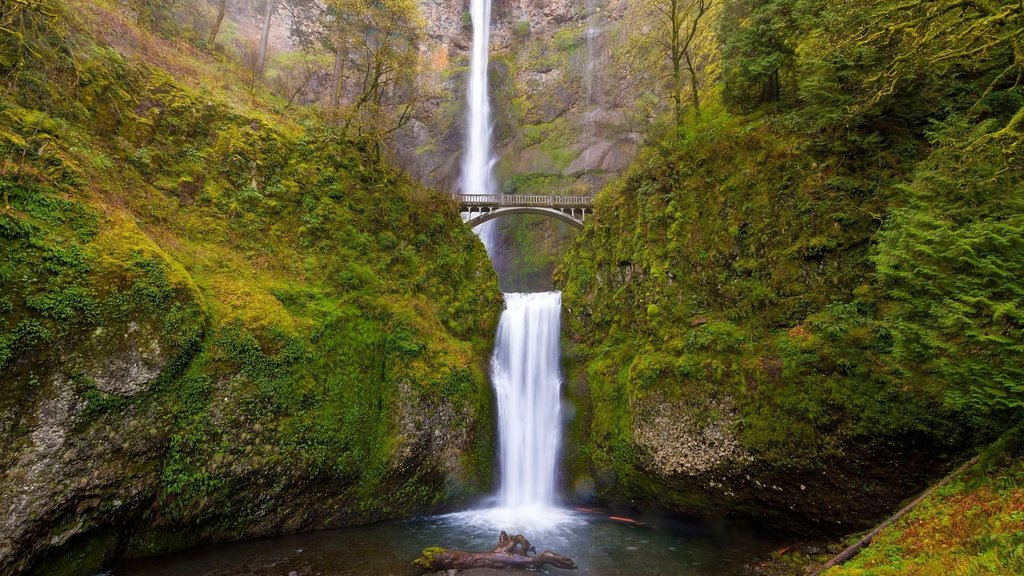
Multnomah Falls is the tallest waterfall in the Columbia River Gorge, with a drop of 620 magnificent feet. It is also conveniently located near Portland, perfect for a day trip from Portland, and right off Interstate 84, making it one of Oregon's most visited and photographed natural attractions, attracting more than two million visitors every year to the state.
Many factors contribute to Multnomah Falls being a unique destination. Geology is one of these disciplines. Multnomah Falls is fueled not only by rainfall but also by snowfall and underground springs from Larch Mountain, according to the National Park Service. The mossy cliff face of the falls has five flows of Yakima basalt, which may be seen up close if you look closely.
Another noteworthy aspect of this establishment is its design. The Benson Bridge, which spans the lower falls and was built by Italian stonemasons in 1914, was named for Simon Benson, a renowned businessman who owned the falls at the time of its construction. The bridge is a popular tourist destination.
The vast majority of those millions of visitors stroll up to the base of the falls, take the short walk up to Benson Bridge, or hike up the paved switchbacks to the top of the waterfalls.
If you like hiking, go for Multnomah-Wahkeena Loop Trail, a 4.9-mile hike that starts and finishes at the Multnomah Falls parking lot and takes you through peaceful waterfalls, bubbling streams, beautiful views, and other beautiful sites, offers an in-depth adventure for more adventurous visitors and local hikers alike.
For the sake of seeing the most waterfalls, this loop is unbeatable. Wahkeena Falls, Multnomah Creek's rapids, and the flowing, gentle waterfall of Multnomah Creek are all featured.
It is possible to complete the loop in either direction, but the most enjoyable way to do so is to start by traveling west to Wahkeena Falls. From the parking lot, make your way up the hill toward Multnomah Falls, where you will turn right at the visitor center. The main path for the day, the Wahkeena Trail (no. 420), begins at the Wahkeena Falls parking area and continues to the Wahkeena Falls parking lot.
Multnomah Falls Lodge is a sight to behold in and of itself. The lodge construction, which was constructed in 1925 and designated as the nation's first National Historic Landmark, is made up of every variety of rock found in the Gorge. The Multnomah Falls Visitor Center and Gift Shop, as well as a restaurant serving Northwest cooking in a comfortable dining room, are all located on the lower level.
Best time to visit: In the spring, when the waterfalls are at their most spectacular, is the best time to visit. The waterfall's volume has been pushed to its maximum capacity by rain and snowmelt, and the wildflowers along the adjacent paths are in full bloom. Weekends and spring break are the busiest times for visitors since they arrive in greater numbers.
Distance and driving time: 33 miles, a 30-minute drive from Portland
2. Willamette Valley
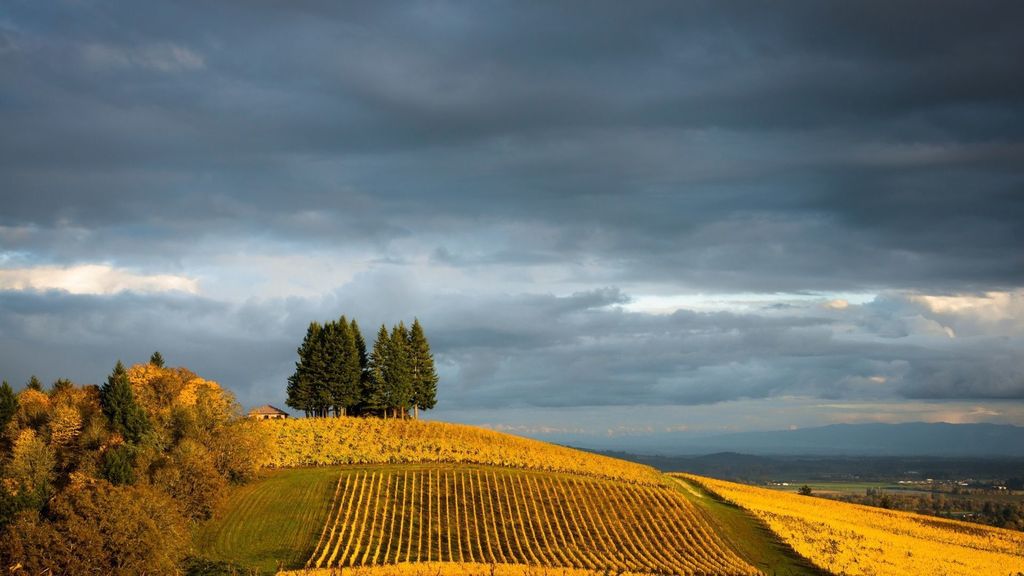
A day trip from Portland allows you to discover Oregon's Willamette Valley, a popular wine region that offers a lot to visitors. The Willamette Valley is a world-renowned wine region for a reason: it is home to two-thirds of the state's vineyards and wineries. There are numerous activities one may engage in while in the Willamette Valley, such as hiking alongside waterfalls, seeing adorable and distinct communities, and a whole lot.
However, while the Willamette Valley is most renowned for its wine, the region also boasts an abundance of excellent craft beers to enjoy. Because of their dedication to hop farming, the Benedictine monks of Mount Angel Abbey have been growing it since the 1880s. Benedictine Brewery, owned and operated by the monks of Portland, Oregon, is a continuation of this history. Take a sip of the wittily called Black Habit Dark Ale or the St. Benedict Farmhouse Ale, both of which are available. The taproom does not allow outside food (such as a picnic), although small snack plates can be purchased at the counter. As a result of the devout monks' deliberate decision not to play background music in the taproom, visitors will appreciate the refreshing silence of the establishment.
You will not go hungry while visiting the Willamette Valley, which is home to a plethora of notable restaurants. When Tina's opened its doors in Dundee, it was one of the city's earliest fine-dining establishments. A focus on locally sourced and sustainably produced dishes is offered nightly for dinner. While the menu changes seasonally, fried Brussels sprouts, pan-seared scallops, and goat cheese souffle are all worth trying if they are on the menu at the time of visiting. Thistle, from McMinnville, Oregon, is another prize-winning variety. Because it is located adjacent to a speakeasy-style bar, this establishment offers a constantly changing menu, which is presented on a small chalkboard near the entrance of the establishment.
In the Willamette Valley, numerous lovely gardens and attractions are centered on agriculture. Visit the Oregon Garden, which spans more than 80 acres near the little town of Silverton and offers a variety of activities for visitors. A sensory garden, a pet-friendly garden, a children's garden, a rose garden, and other amenities are available on the property.
Best time to visit: Since July and August are often the hottest months in the Willamette Valley, the coast will likely be covered with fog in those months. Typically, wonderful weather continues into the beginning of October, but the best month for the seaside is generally September, with fine weather lasting the whole month.
Distance and driving time: 47.5 miles, a 47-minute drive from Portland
3. Silver Falls State Park

Silver Falls State Park, which is most known for its abundance of scenic waterfalls, is the largest in Oregon at 9,200 acres. More than 1.1 million people visit the park each year, located in the foothills of the Cascade Mountains. This park is considered to be one of the “crown jewels'' of the Oregon State Park system, and if you make the effort to come, you will see why.
You can't walk behind a waterfall anywhere else, can you? See what a 177-foot curtain of water looks like from behind and examine the famous South Falls for a while. Also referred to as the Walk of Ten Falls, this scenic trail follows a wild, forested terrain that meanders alongside a set of ten waterfalls. One waterfall after another flows down a steep rock canyon as the trail goes by. At the bottom of the canyon, the trail meanders into a brook. The overall elevation change on this 7.2-mile trip is 800 feet. Several interconnected trails provide access points that together form a shorter path. No pets are allowed on the Canyon Trail, which is for everyone's protection. Pets on a leash are allowed on all other trails, including hiking paths.
The South Falls day-use area offers lawns with plenty of room for tables, playgrounds, grill stands, horseshoe pits, and an off-leash area for dogs. People have been utilizing these grounds for potlucks, family reunions, and weddings since it opened in 1933.
In addition to 40 tent sites, 14 cottages, and 50 RV parking spaces with electrical hookups, there are 46 hike-in/bike-in sites with full connections. All campsites, RV spaces, and cottages are available in the main park. Make a day of it and bring your horse to the horse campground. Additionally, there are group tent and RV campgrounds, and the historic Youth Camp that accommodates up to 250 campers in the park.
Best time to visit: For the most part, summer has the most crowds, but winter is when you're likely to have the best time. Trail traffic in the temperate rain forest is lighter, campgrounds are more abundant, and because of increased rainfall, the park's famous waterfalls are even more beautiful than normal.
Distance and driving time: 54 miles, 1 hour and 5 minutes drive from Portland
4. Cannon Beach
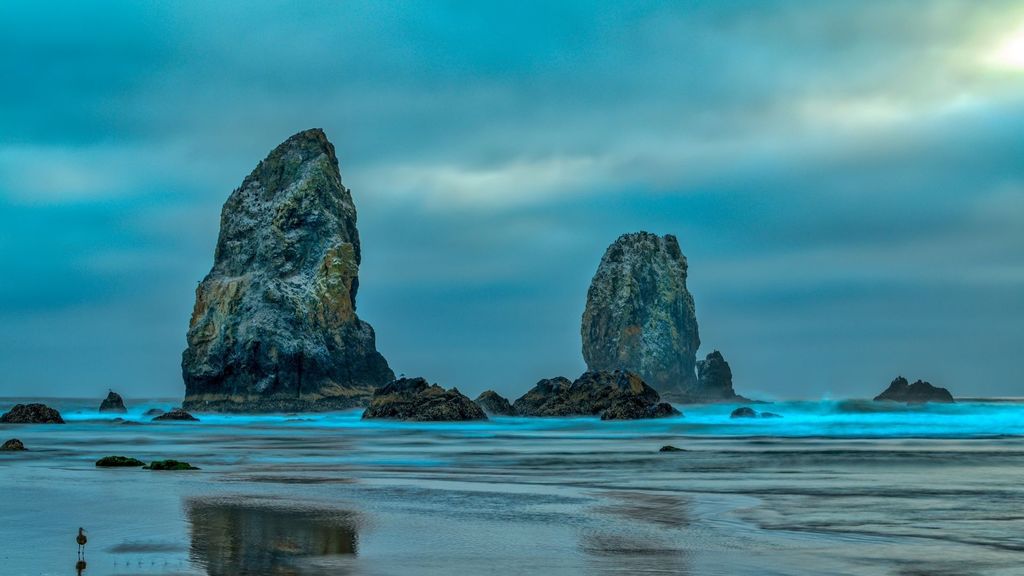
Haystack Rock and Needles Rock jut into the ocean at Cannon Beach, which makes it one of Oregon's most picturesque destinations. The scenic beach walk and having unlimited access to all kinds of creatures living in their natural habitats, together with participating in the yearly sand building contest, provides an excellent setting for enjoying a stroll along the coast. At the same time, Cannon Beach maintains a hometown feel while allowing for a greater presence of chain businesses and restaurants.
Haystack Rock, located on Cannon Beach, soars 235 feet above the ocean. An exceptionally well-known sight throughout the state, which creates fantastic photographs and attracts visitors from throughout the country.
Bears that roam the islands of the Oregon Islands National Wildlife Refuge are shielded from predators because of the overlying ecosystem, and the huge monolith was produced over the last several million years through the same lava flows that sculpted much of the state's jagged coastline. At low tide, visitors are free to take a walk to the nearby sea stack, where they will have the opportunity to view all of the many marine animals that reside in the tidal pools and surrounding seas.
By utilizing both your eyes and your body, you may view many things while enjoying the environment and doing other activities, such as sunbathing and swimming. Beachcombing is another famous activity. Due to the number of tidal pools, surfing, boogie boarding, and kite flying are abundant.
Additionally, there is breathtaking beauty at Ecola State Park, which stretches fifteen kilometers of beautiful and serene coastline. Films like The Goonies and Twilight have been filmed in the park.
Less than two kilometers offshore from the Tillamook Rock Lighthouse is a basalt sea stack that has a lighthouse situated on top of it. Due to the rocky seafloor, fierce storms, and the terrible weather at sea, the lighthouse is nicknamed as 'Terrible Tilly.'
Best time to visit: The best time of year to visit Cannon Beach for hot-weather activities is from late July to early September, with a peak score in the third week of August.
Distance and driving time: 80 miles, 1 hour and 24 minutes drive from Portland
5. Sauvie Island
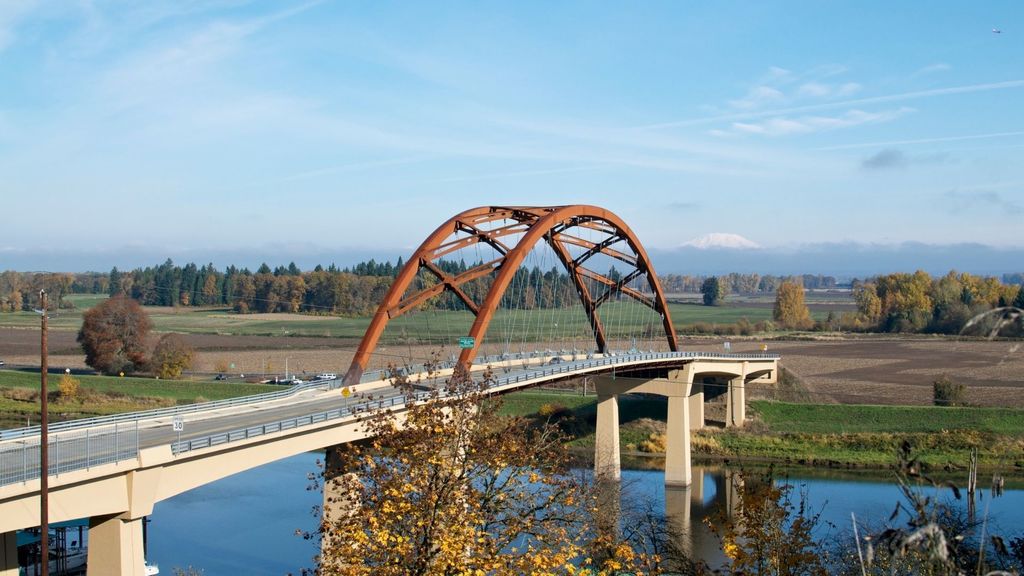
Sauvie Island is about to become your family’s favorite spring and summer getaway from Portland. It's full of wildlife, all-organic produce, and has a big beachfront for children. Best of all, it is only a short drive away from downtown Portland. Take your family on an adventure that includes a day on the beach, picking berries, and petting farm animals on Sauvie Island.
Sauvie Island has some of Portland’s best beaches, for good reason. As a beach lover, you can depend on Sauvie Island beaches to provide water and sand play throughout the spring, summer, and fall. Visitors can bank on these beaches to be a great place to base a full day away from home. The greatest chance for an enjoyable sunny day on the water is Walton Beach. Build a sandcastle, watch for eagles, and count cargo ships. There is still plenty of space to fly a kite here.
Would you like to go hiking? You can enjoy a nature adventure of around two miles in length in Wapato Access Greenway State Park by taking the park's seasonal lake trail. You're likely to spot at least half a dozen bird species among bigleaf maples and Douglas firs, including bald eagles. The seven-mile round-trip Warrior Rock Lighthouse Trail begins at the northeast extremity of the island, leading to a scenic beach with views of Oregon's smallest lighthouse.
The perfect way to spend time in the Pacific Northwest is fishing. Visit Haldeman Pond in early spring, as Aaron's Lake, Steelman Lake, or Mud Lake all make excellent summertime getaways.
Best time to visit: Here, in Sauvie Island, each season has its own beauty. March for viewing waterfalls and sandhill cranes. January - March for viewing bald eagles. May-August for warm water fishing. Spring and summer are best for songbird viewing.
Distance and driving time: 19 miles, a 29-minute drive from Portland
6. Mt. Hood National Forest
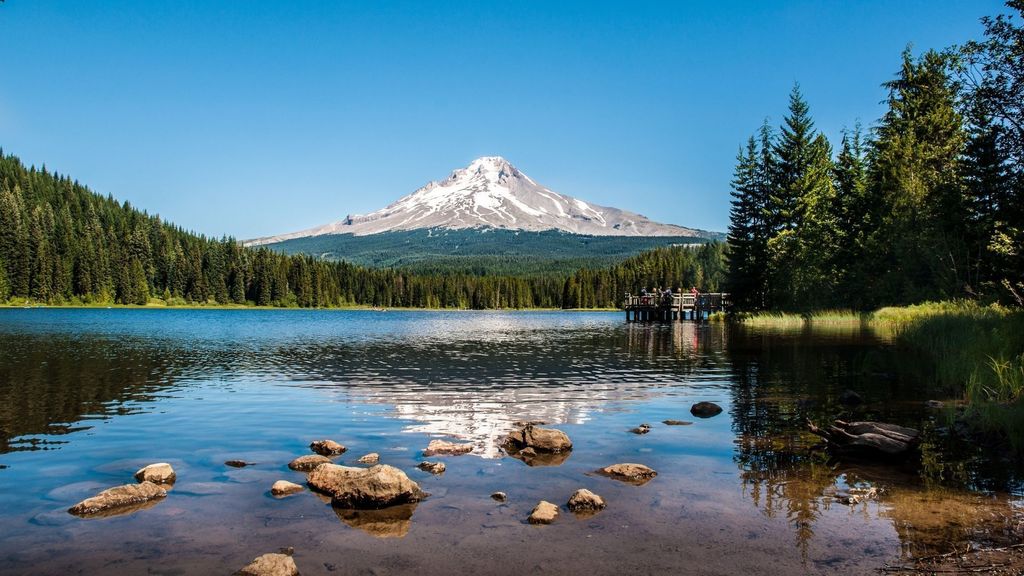
Mount Hood is at 11240 feet above sea level and is the highest mountain in the state and overlooks the streets of Portland. Ski resorts, summer resorts, and historic tourist sites house this sleeping stratovolcano. It is the core of the Mt. Hood National Forest, which covers more than one million acres.
Scenic charms in the national forest range from waterfalls, hot springs, and glaciers to varied wildlife and alpine wildflowers. It's the snow that pulls people onto the slopes in winter. During the summer, Mount Hood's evergreen national forest offers more varied activities including plenty of walking, climbing, and a large number of campsites.
The Scenic Loop of Mount Hood is a nice trip from Portland River, Hood River, and Mount Hood National Forest. The first segment links Portland, the state's major city, with tranquil communities and waterfalls along the Gorge of the Columbia River.
Hiking in Mt. Hood National Forest offers a diversity of wildlife. The National Forest Area consists of roughly a thousand miles of trails, however, the majority of visitors follow some of the more accessible and picturesque paths. Particularly spectacular are the lake walks.
The two-mile path on the Trillium Lake round the beautifully mountainous lake gives you wonderful views over the water of Mount Hood. A 2-mile vista over the top beyond a glacial cirque lake is likewise covered by the Mirror Lake route, while the Lost Lake is a littoral road with a national forest camping among the ancient forest. The Old Oregon Trail path is also visited by waterfalls, alpine wetlands.
Mountain biking always takes place in the spring, summer, and fall with the fast-flying Timberline To Town trail. Horse riders also find their fill, since most routes are available to equestrian traffic in the Mt. Hood National Forest as well. Every mode of movement in the national forest of Mount Hood can be traced to powerful riverbanks, and trails should be checked before traveling.
One of the best ways to explore Mt. Hood's natural magnificence is to spend the night in the National Forest. The Forest Service administers about 100 camping places, including picnic tables, burning rings, and restrooms. Campsites like Trillium Lake, Hoodview (Timothy Lake), and Still Creek are plenty to select from and are popular for visitors.
Mt. Hood Meadows offers a wide variety of snowboard and skiing fields. Most runs are medium to advanced, all with 11 lifts accessible. Another local ski resort is Mt. Hood Skibowl, famous for its night skiing, with four double chair lifts and five toes on its winter playground. The 65 runs, with a maximum drop of 1 500 feet, are mostly intermediate and advanced.
Best time to visit: The best time to visit is from late April to early June. The orchards in the Hood River Valley and around The Dalles are in full bloom in April. Late July through August is always a safe bet for the best weather (i.e., the least possibility of rain).
Distance and driving time: 45 miles, a 55-minute drive from Portland
7. Mount St. Helens
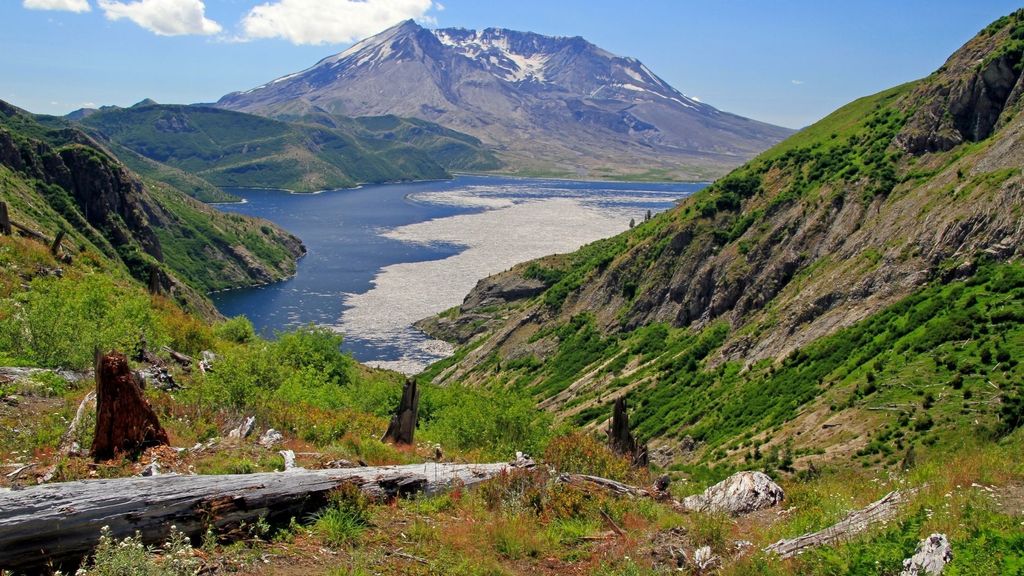
Mount St. Helens is an active stratovolcano located in Skamania County, Washington in the Pacific Northwest region of the United States, lies 52 miles northeast of Portland.
Mount St. Helens began a sequence of volcanic explosions and pyroclastic flows on March 27, 1980. A succession of phreatic blasts erupted from the summit, building up to a large explosive eruption on May 18, 1980. Due to safety precautions, tourists are only permitted to view this gorgeous mother of nature from a distance.
This visitor center, located 5 miles east of Castle Rock, is the greatest way to learn about Mt. St Helens National Volcanic Monument. There's a great video and a variety of exhibits, including a volcano mock-up where you may duck beneath the cone for displays on the mountain's inner workings. The 1-mile Silver Lake Wetlands Trail is located outside.
Ape Cave is a 2-mile-long lava tube created by a lava flow that followed a deep riverbed 2000 years ago. It is the western hemisphere's longest lava tube.
Hikers can choose between the 0.8-mile Lower Ape Cave Trail and the 1.5-mile Upper Ape Cave Trail, which requires some maneuvering over rock heaps and through tighter passages.
To park at the trailhead, you'll need a Northwest Forest Pass ($30/5 per year/day). The journey finally comes to an end at the top entryway. Bring your own light source or rent lanterns for $5 at Apes' Headquarters, which is located at the caves' entrance. During the summer, rangers give free trial explorations many times a day.
Windy Ridge Viewpoint is a feature of Mt. St Helens' remote eastside entrance. With felled forests, lonely mountain slopes, and the strange sight of tree-clogged Spirit Lake, previously one of the best resorts in the South Cascades, visitors get visceral, if spooky, sense of the havoc wrought by the 1980 blast.
The parking lot has restrooms and a snack bar. Forest Passes can be purchased online or at ranger stations.
This observatory, which is located at the end of Highway 504 and faces directly into the mouth of Mt St Helens crater, features exhibits depicting the geologic processes surrounding the 1980 outburst and how they advanced the science of volcano forecasting and monitoring.
The Eruption Trail, a paved 1-mile round-trip trail, provides once-in-a-lifetime views of the crater.
Best time to visit: The weather is very pleasant during the middle of the year, with moderate-high temperatures.
Distance and driving time: 64 miles, 1 hour and 4 minutes drive from Portland
8. Smith Rock State Park
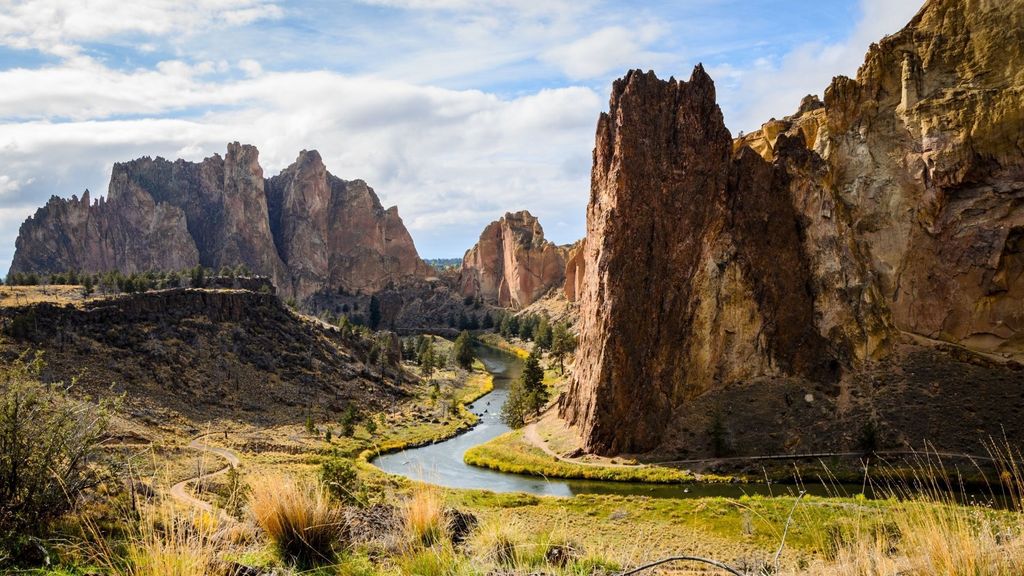
Smith Rock State Park is breathtaking in any season, with stunning cliffs, towering red rocks, a meandering river, and endless views. This magnificent region in the heart of Oregon is definitely worth the drive, whether it's for a quick stop to gaze out from one of the magnificent vistas near the park's entry or to go deeper into the canyon.
When you come, one of the first things you'll notice is that the park is packed with climbers. Hikers with ropes, shoes, and equipment can be seen on nearly every rock face. This is a wonderful spot to try sport climbing if you've never done it before.
Daredevils have been scaling the basalt columns since the 1980s, making it the cradle of American sport climbing. There are almost 2000 routes in the park, as well as 300 bouldering lines for those who don't want to bring their own gear.
Smith Rock State Park has a dozen hiking trails twisting through more than 650 acres of land that are suitable for people of all abilities. Walking through the huge canyon on your own two feet is one of the best ways to explore.
The formations are a photographer's dream, and there are excellent hiking trails along with the ancient lava flows for people of all abilities, as well as horseback riding, mountain biking, and rock climbing.
Mountain biking trails can be found throughout Smith Rock State Park. The majority of the trails are not suitable for novices, but because you can also cycle on riverfront routes and the road, riders of all levels will find something to enjoy. The Summit Trail is the most popular mountain biking route, and if you want to add more miles to your trip, you can continue to the surrounding BLM areas.
Best time to visit: Smith Rock is best enjoyed in the spring and fall for hiking and climbing. From mid-September to mid-November, the weather is usually the most consistent, without the intense heat of peak season.
Distance and driving time: 142 miles, 2 hours and 41 minutes drive from Portland
9. Abiqua Falls
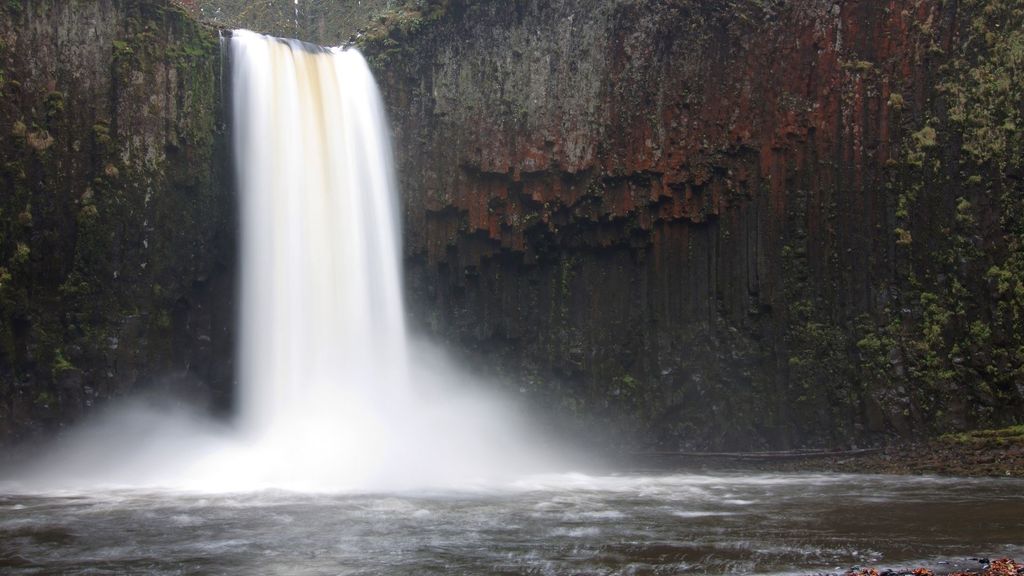
Abiqua Falls, a 92-foot waterfall near Silver Falls State Park in Scotts Mills, Oregon, is a famous tourist attraction.
The road to Abiqua is bumpy and around 11 miles long, so plan on taking it slowly. Once you've arrived at the trailhead, proceed with caution on this 1.8-mile hike. Wear proper shoes and pay attention because the trail is rather steep and people have fallen. This is one of Oregon's most popular waterfalls, and you'll realize why once you see it.
Hiking to Abiqua Falls is an adventure in itself! The hike itself isn't long; it's only approximately a mile round way from the trailhead's last parking place. The majority of the trail is downhill. This would normally be a snap, but the slope is a little steep and rainy, making it sticky and slippery.
Because there are a few possible detours on the trail, use an offline map. You'll come to a roped area as you continue down the trail. There is a rope fence that is supported by trees and leads you steeply down into a canyon. You'll reach a large downed tree pointing to the river as you make your way down, holding the ropes and careful not to be covered in mud or slide down into a tree.
If you're planning on staying in the area and want to see what else there is to do, bring your ATV over for some trail fun. You may cycle for more than 6 kilometers through this area, which is mostly deserted. The Crooked Finger ATV trail will take you through the forest, but it will not take you to the waterfall.
Best time to visit: To see the waterfall surrounded by lush greenery, visit it from April to October. This is also the safest time to take the Abiqua Falls trail. However, if you don't mind walking on snow and ice, it's well worth a visit during the winter months, when frozen water transforms the area into a magical setting.
Distance and driving time: 50 miles, 1 hour and 5 minutes drive from Portland
10. Dry Creek Falls
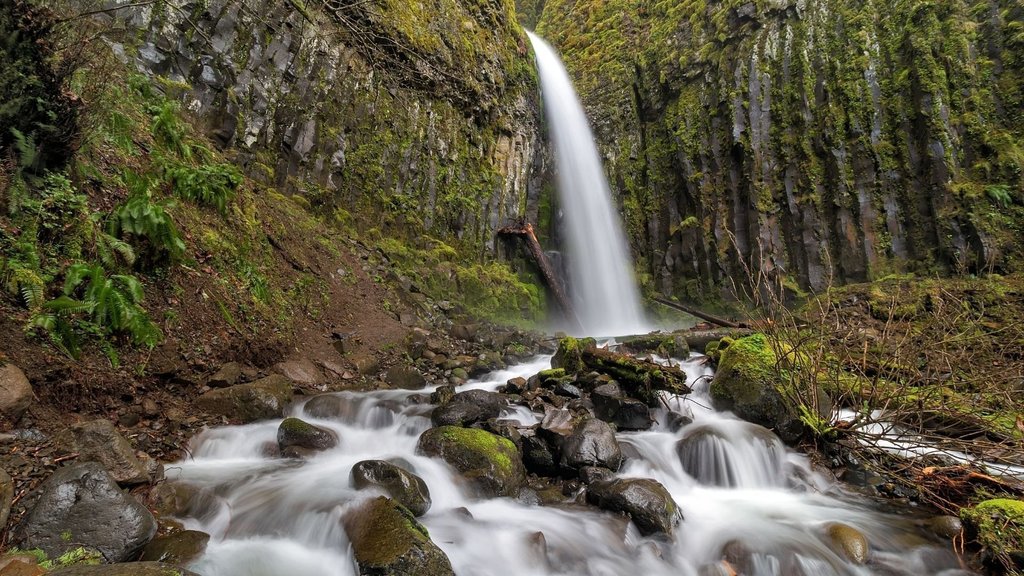
Dry Creek Falls is a quick, simple, and scenic drive from Portland, particularly in the fall when the leaves change color. It's easy to get there along the Pacific Crest Trail, and it's a favorite spot for folks looking for a short, woodsy hike with plenty of Gorge scenery.
The trail is 4.4 miles long and is a nice, quick hike for hikers on a tight schedule. If you become hungry after hiking the path, stop by the East Wind Drive-In for a wonderful milkshake and fries or a burger. The trailhead is almost directly across the street.
The Bridge of the Gods Trailhead is the starting point for this trek. Cross the road and follow the Pacific Crest Trail parallel to I-84 from the trailhead. On your right, there's an old safety fence.
As you pass under the highway, you'll come to Moody Street. Walking upward to the right, going beneath the highway, is a good idea. Keep right on a gravel road for a short distance to a pair of parking pullouts as the road bends left. The whole distance walked on the road is approximately 100 yards.
The Gorge Trail, which leads to the Ruckel Creek Trail and the Eagle Creek Campground, is on the right. To the left, you'll find the Pacific Crest Trail, which also serves as the Gorge Trail (no. 400) going east.
When you reach Dry Creek, the route will take you to another dirt road. On a wooden bridge, the PCT crosses Dry Creek. Take a right instead of crossing the bridge and head up to the falls, which are only 0.2 miles distant. Return to the trail in the same direction you came.
Best time to visit: The Dry Creek Falls Trail is open all year, however, because the major attraction is a waterfall, the best time to visit is during the wet season. This Columbia River Gorge waterfall hike is especially beautiful in the spring when rain showers and snowmelt fill the Gorge's rivers and wildflowers blossom on the slopes.
Distance and driving time: 44 miles, a 46-minute drive from Portland
11. Tillamook, Oregon

Tillamook is the charming county seat of Tillamook County, Oregon, and is situated on the southeastern coast of the lovely Tillamook Bay in the Pacific Ocean. The town, which is named for the region's indigenous Tillamook tribe, is best known as the home of the world-renowned Tillamook Cheese Factory, which offers guided and self-guided tours of its cheese-making facilities and operations throughout the year. The Tillamook Air Museum exhibits World War II-era planes and relics, while Cape Lookout State Park offers beautiful beachfront lengths as well as hang gliding and paragliding opportunities.
Cape Lookout State Park is a lovely state park on Cape Lookout, between the Pacific Ocean and Netarts Bay, on a sand spit; located just south of Tillamook, is home to some of the most spectacular visual panoramas in the Pacific Northwest, featuring gorgeous waterfalls and vistas of the Pacific Ocean. A 50-foot stone revetment protects a three-mile stretch of beachfront at Cape Lookout, which is open to the public year-round for beachcombing, hang gliding, and paragliding.
The Cape Lookout Trail, which spans for two miles along the park's headland, is one of over eight miles of hiking and walking routes that meander across the park's beautiful old-growth forest regions. At the park's campsite, there are over 200 tent and RV hookup sites available, as well as rented cabins and Mongolian-style yurts.
Cape Meares Light is a public living history exhibit on Cape Meares near Tillamook Bay. The lighthouse was built in 1890 to serve as Tillamook Bay's primary light station. The National Register of Historic Places has listed the lighthouse since 1993. Throughout the week, self-guided tours of the lighthouse are available for visitors.
Munson Creek Falls State Natural Site in Oregon is well known for its eponymous waterfall. The falls cascade for 319 feet, making it the Coast Range's tallest waterfall.
The park's scenery is dotted with beautiful old western red cedar and Sitka spruce trees, and it also serves as a vital salmon spawning facility for the Pacific Northwest.
A wonderful walk winds its way along Munson Creek, providing panoramic views of the waterfall. One of the country's tallest remaining Sitka trees, which soars over 260 feet over the park's landscape, is one of the park's natural landmarks.
Best time to visit: Early July to late August is the best time of year to visit Tillamook for warm-weather activities, according to the tourism score.
Distance and driving time: 73 miles, 1 hour and 18 minutes drive from Portland
12. Eugene, Oregon

Eugene offers the benefits of a big city, including excellent museums and a vibrant environment, a fantastic day trip destination from Portland.
The city is readily escapable on hiking trails or nature treks, including beautiful parks and arboretums as well as a bird of prey sanctuary.
Eugene and Springfield are separated by the Willamette River, which meanders through the city. Visitors can enjoy the bicycle routes and other recreational amenities of Alton Baker Park, the city's largest park, which is located along its banks.
The park is divided into two sections, one of which is the 237-acre Whilamut Natural Area. Bike bridges connect trails on both sides of the river, extending paved tracks beyond park limits.
Pre's Trail, which is just over four miles long and named after hometown hero Steve Prefontaine, is a popular cross-country and jogging course within the park.
The Jordan Schnitzer Museum of Art at the University of Oregon in Eugene was built without windows to conserve the treasures inside. It houses an extensive collection of American, European, Korean, Chinese, and Japanese art, with a concentration on Asian art.
On Saturdays, free public tours are available at the museum, or guests can request a guided experience ahead of time.
The Hult Center for the Performing Arts has been at the core of Eugene's vibrant cultural scene since 1982. Throughout the year, there is a wide range of entertainment available, from jazz to opera. The Eugene Ballet Company, the Eugene Concert Choir, the Eugene Opera, and the Eugene Symphony are among the resident companies. The center also has permanent and temporary art collections that can be seen throughout the building, in addition to the performing arts.
Mount Pisgah Arboretum, which spans 209 acres on the slopes of its namesake mountain, is home to both local and worldwide tree species. From the parking lot, walking trails lead to the peak of Mt. Pisgah, riverbanks, and several overlooks across the surrounding farmlands.
Best time to visit: The best month for the coast is usually September, with good weather often holding on to October.
Distance and driving time: 109 miles, 1 hour and 38 minutes drive from Portland
13. Tom Dick and Harry Mountain
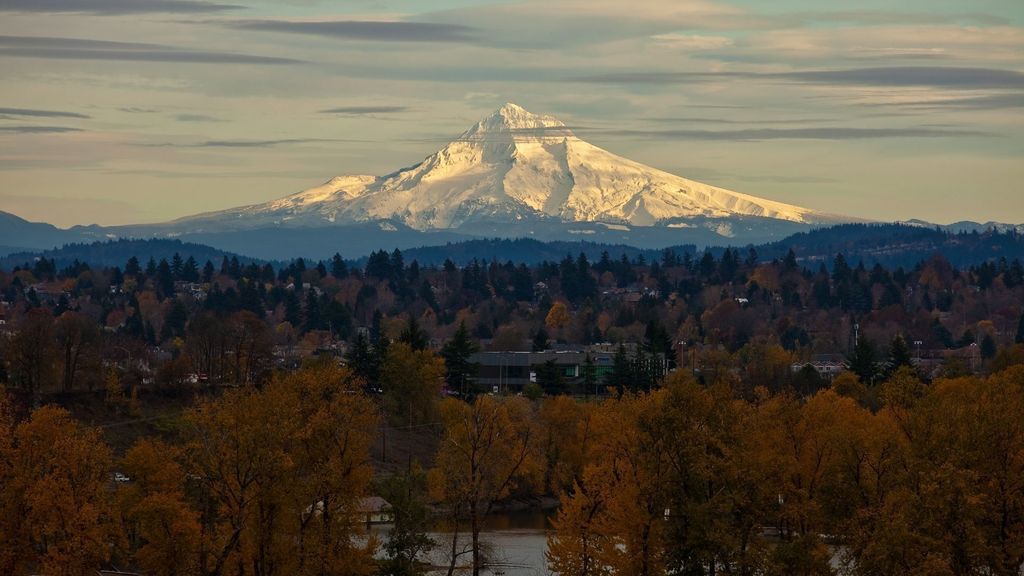
Mount Hood, Mount Adams, Mount Rainier, Mount St. Helens, and Mount Jefferson can all be seen from Tom Dick and Harry Mountain, a popular tourist attraction and a great day trip from Portland. It is a two-mile-long volcanic mountain in Clackamas County, Oregon.
With so many campsites near Mirror Lake, it's a perfect place for a first backpacking trip for kids or a last-minute camping vacation in the woods!
A trailhead with easy access from the highway. Because of the trail's accessibility, it's an excellent site to watch the sunset. This trail is also suitable for snowshoeing in the winter.
Are you looking for those famous Mt. Hood photos? See where they were all taken by climbing the well-graded trail to Tom Dick and Harry Mountain, one of Portland's most accessible summit treks. Climb around 900 feet and 1.5 miles to Mirror Lake from the crowded Mirror Lake Trailhead on one of Oregon's most popular and easily accessible routes.
This walk is well-known for a reason. Just before strolling down the outlet stream from the lake, you'll hear it after 9 rapid switchbacks. Continue straight at a signposted junction toward Tom Dick and Harry at the 1.5-mile mark. After climbing for a mile away from Mirror Lake, the trail comes to an enormous rock cairn with an arrow pointing to your hard left turn. After another half mile and a few hundred feet of rising, the trail emerges on a talus peak with plenty of large slab stones to lounge on while taking in the vista. Return the same way you came, making careful to round Mirror Lake and take in the scenery.
Best time to visit: From June to October is the optimum season to hike Tom Dick and Harry Mountain. Snow can be found on the trail and at Mirror Lake until mid-June.
Distance and driving time: 55 miles, 1 hour and 7 minutes drive from Portland
14. Rowena Crest
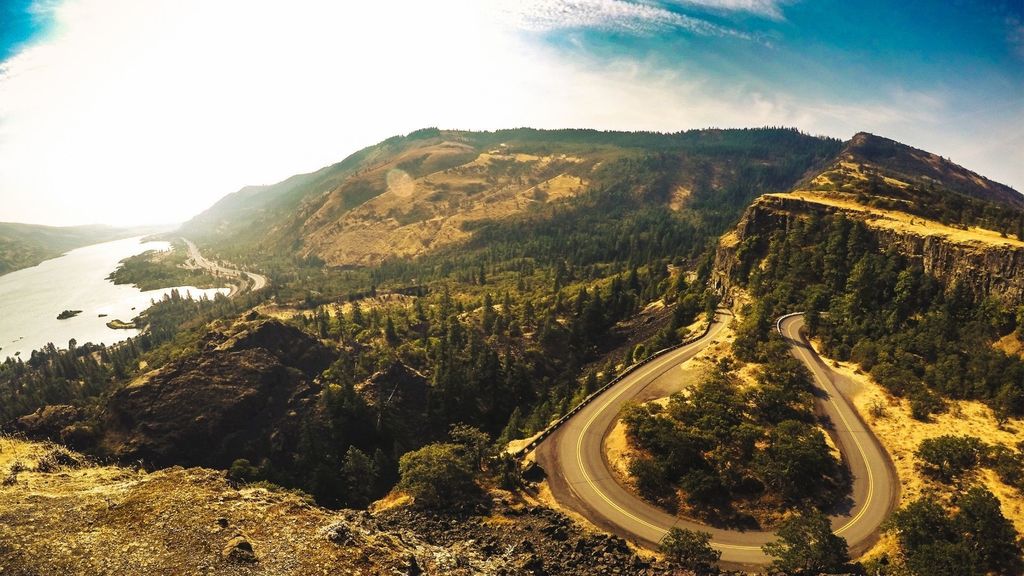
The Rowena Crest Viewpoint offers one of the most spectacular views of the Columbia Gorge and one of the most popular day trips from Portland. The broad, paved park sits on a steep hill, offering excellent views of the Columbia River, a hidden lake, the curved highway, and desert cliff sides.
You can see Washington and the Klickitat River Bridge in Lyle across the river, as well as the peaks of Mount Hood and Mount Adams. Looking down on the historic highway, which has a fascinating horseshoe form and is one of Oregon's most photographed routes, is the highlight of a vacation here. It's identical to Arizona's Instagram-famous Horseshoe Bend, but without the crowds!
The Tom McCall Nature Preserve begins at the Rowena Plateau walk, wherein the spring, swathes of lush, golden-yellow grass bloom with vivid wildflowers.
The out-and-back Tom McCall Point Trail takes about an hour to complete, making it one of the Gorge's most popular, easy walks and a perfect option for young families.
The dirt trail has a modest elevation, and as you progress up the hill, you'll be rewarded with panoramic vistas of the high desert. However, keep an eye out for rattlesnakes who like to sunbathe on the pathway! The open trail also provides minimal coverage and can be rather windy. The peak is slightly under two miles away; you can go all the way up to a chain-link fence, but this is the best observation point.
Rowena Crest is one of the top hikes near Hood River and a terrific opportunity to get a bird's-eye view of the Columbia River Gorge National Scenic Area, thanks to its winning combination of amazing views, simple paths, and proximity to town.
Best time to visit: The best time to visit is in the spring when the flowers are blooming. The road up to the viewpoint is very windy and offers terrific views of the Columbia River gorge. The famous Rowena crest is easily accessible and extremely rewarding!
Distance and driving time: 75 miles, 1 hour and 20 minutes drive from Portland
15. Wooden Shoe Tulip Farm
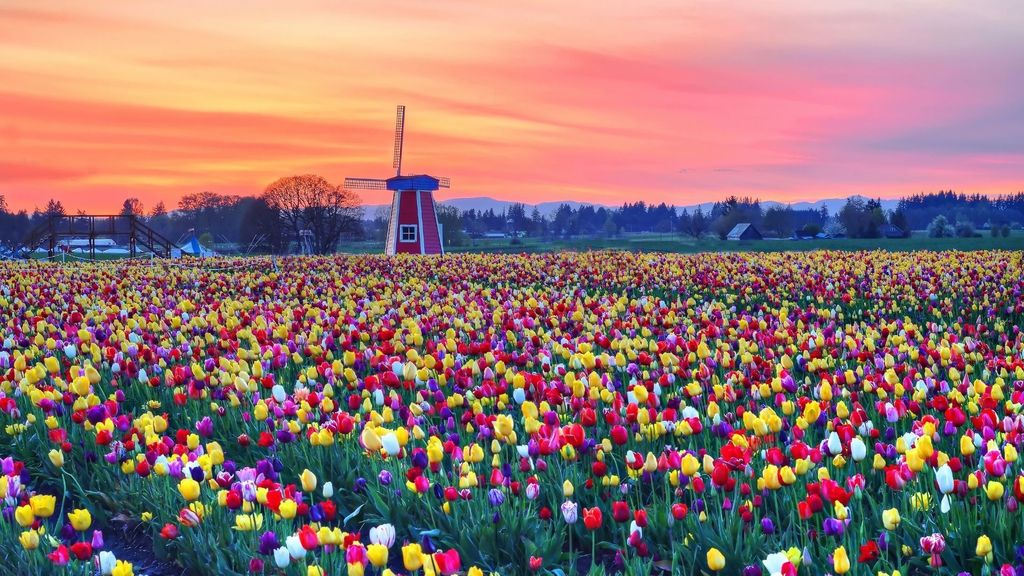
Wooden Shoe Tulip Farm is one of the largest tulip and daffodil bulb farms in the Northwest, with 40 acres of color in bloom. Throughout the year, visitors can enjoy views of vineyards, distant mountains, and gardens.
Every spring, the Wooden Shoe Tulip Festival blooms, attracting thousands of visitors to witness acres upon acres of tulips in full bloom. The event is held for 4-6 weeks in the spring at Wooden Shoe Tulip Farm, which also sells bulbs, cut tulips, potted flowers, and other items.
The owners of the Wooden Shoe Tulip Farm have added a gift store, café, and family-friendly fun in the shape of a kids' area (complete with a "cow train" for rides through the flower fields, rubber duck races, and pony rides) in addition to the magnificent tulips. Gardeners can acquire bulbs for fall planting in addition to fresh-cut flowers and potted tulips, and even the most inexperienced photographers can produce stunning images — you can't go wrong with 40 acres of tulips, a windmill, and Mount Hood in the foreground.
During the festival, the company organizes a hot air balloon activity for fellow visitors. Don't miss out on the chance to ride in one of them and take in the breathtaking view from above.
Best time to visit: The best time to visit the Wooden Shoe Tulip Fest is obviously when the tulips are in bloom, which is highly dependent on the temperatures between February and March. Tulips will bloom early as the temperature warms up.
Distance and driving time: 33 miles, a 48-minute drive from Portland
16. Seattle
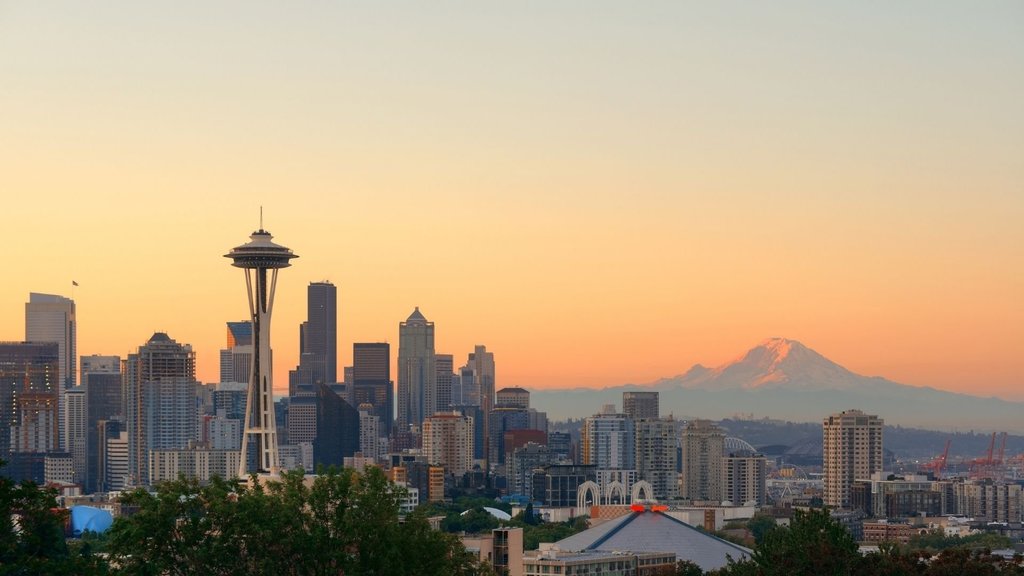
Seattle is a city that both urbanites and nature lovers will admire. There's no shortage of interesting things to do in Seattle, with the ocean on one side and gorgeous mountains on the other. Aside from its apparent natural beauty, the cuisine, art, and music scenes are all reasons to plan a day trip from Portland.
Firstly and importantly, pay a visit to Pioneer Square, Seattle's oldest area where the first settlers built their homes, which features stunning architecture, art galleries, cafés, and bookstores. It's also one of the best venues in Seattle to learn about the city's history. Learn about Seattle's role in the 1890s huge exodus to Canada's Yukon region at the excellent Klondike Gold Rush exhibit.
Then go to Smith Tower, which was completed in 1914 and was for many years the tallest skyscraper on the West Coast, with views from the 35th floor that are still breathtaking.
The Space Needle, which was built for the 1962 World's Fair, is probably one of Seattle's most recognizable landmarks. The attraction not only offers spectacular views of downtown, but also of the Puget Sound, the Cascades, and the Olympic Mountains.
The Chihuly Garden and Glass highlight the epic work of Northwest glass artist Dale Chihuly with a variety of mind- and glass-blowing indoor and outdoor works for a unique visual experience. The sculptures range from exquisite to grandiose, especially in the garden, where plants and glass pieces tangle in a rainbow of colors. Because of the refraction, it's an entirely different experience depending on the weather—but it's always Instagram gold.
Visit Pike Place Market, a well-known market that is a must-see no matter how long your stay lasts. It's not only Seattle's most visited attraction, but it's also a terrific destination for foodies to sample some delectable fare.
Find the pink entry to the Pink Door, a secret neighborhood favorite that serves beautifully fresh Italian fare. Pike Place Chowder, which serves some of the best clam chowders this side of Boston and Lowell's, where you can check the Seattle Joe's Scramble (sausage, spinach, and mushrooms) off your gastronomical bucket list, are two more terrific sit-down lunch alternatives.
Crumpet Shop, on the other side of Pike Place, is another one of Pike Place's hidden gourmet gems, however, they've been known to sell out by lunchtime.
Best time to visit: The months of September and October are great for visiting Seattle. Summer is the city's peak season, which means hotel rates and availability skyrocket, while the cold winter weather might put even the most enthusiastic tourists off.
Distance and driving time: 174 miles, 2 hours and 44 minutes drive from Portland
17. Bend, Oregon
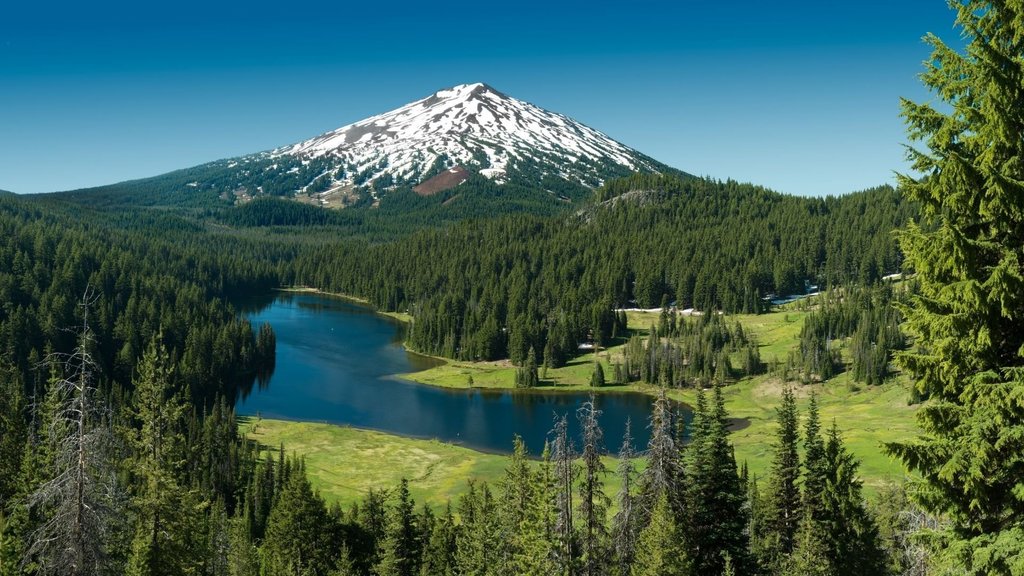
Bend is consistently recognized as one of the finest places to live in the United States, bordered by volcanoes, alpine lakes, and wilderness regions and crossing the beautiful Deschutes River.
Bend is well-known for its daring outdoor activities. Hikers will find an extraordinarily broad choice of routes, while mountain bikers will come from all over the United States to ride the trails.
Mt. Bachelor, which receives approximately 40 feet of snow each year and attracts skiers and snowboarders from all across the region, has its own special magic in the winter.
Newberry National Volcanic Monument is one of the most intriguing destinations to visit in the Bend area, where you may discover the Newberry Volcano's many features.
Walk below via the Lava River Cave, a one-mile-long lava tube, or stand on top of Lava Butte, a cinder cone that rises to 500 feet above the surrounding environment, looking out over the previous lava flow.
About 10 miles west of Bend, Tumalo Falls is one of the area's most popular attractions. The 97-foot waterfall cascades down a precipitous cliff into a raging river below. An observation deck near the parking lot, which looks up the river to the wall of water spilling over the cliff, provides a good view of the falls. The best view of the falls is from here, but if you want a closer look and a different perspective, you can trek up a 2-mile route from the Tumalo Falls Picnic Area's restrooms. There is a guarded area at the brink of the waterfall where you can look down on the falls.
Hiking in Bend is awe-inspiring. Trails range from a simple stroll across the park to breathtaking alpine hikes to mountain peaks. Pilot Butte, the city's most famous cinder cone, has a pathway to the top that is popular with hikers and trail runners trying to get some exercise.
Bend is well-known as a mountain bike destination in the bike world. More than 300 miles of singletrack trails are conveniently accessible just outside of town. Fourteen major riding regions, each with its own distinct qualities, provide opportunities for people of all skill levels. Only some of these sites may be accessible depending on the time of year.
Best time to visit: June, July, August, and September are some of the best months to explore Bend Oregon's beautiful land.
Distance and driving time: 162 miles, 3 hours and 15 minutes drive from Portland
18. Astoria, Oregon
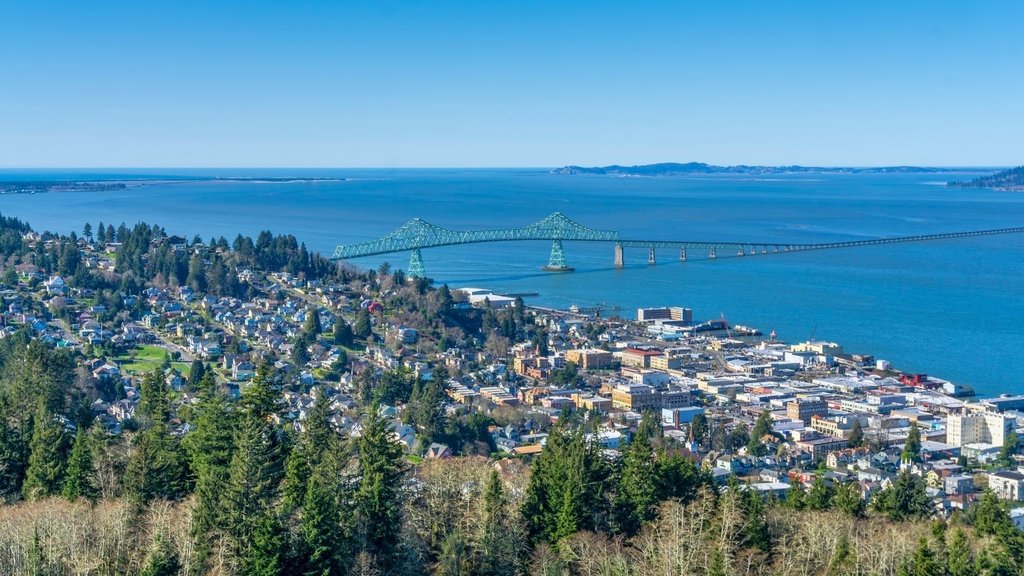
Astoria has a rich history of the fur trade, fishing, and is a pleasant escape from Portland.
Astoria, located in Oregon's extreme northwest corner and surrounded by both the Columbia River and the Pacific Ocean, offers its own special brand of Pacific Northwest charm.
Downtown Astoria is a cultural refuge for tourists, transplants, and long-time residents alike, with plenty of shopping and dining options. The historic Astoria Column offers spectacular views of the Astoria landscape, while the Columbia River Maritime Museum on the Astoria Riverfront offers cultural understanding. Aside from the cultural capital available on the streets, Astoria offers a plethora of outdoor activities.
The Astoria Riverfront, which spans three miles alongside the Columbia River, is a terrific place to start any trip. Restaurants, museums, and other waterfront attractions are all connected by this historic pedestrian area. Visitors visiting the Astoria Riverfront enjoy strolls and can ride the Astoria Riverfront Trolley from March to September. The trolley travels a vintage streetcar route and provides a fun and low-cost way to move around during its season of operation.
Columbia River Maritime Museum is a family-friendly museum, located downtown and overlooking the Columbia River, which tells the continuous maritime history of the region. Various displays in the museum focus on ecological, cultural, and historical aspects of the Columbia River, ranging from storm science to antique cannons discovered in the sand.
Fort Stevens is a vast state park in Oregon's extreme northwest region with a long military history. Fort Stevens and two other fort locations in Washington played a crucial part in coastal defense from the Civil War until the conclusion of WWII. This former military facility now boasts over 4,000 acres of superb natural and recreational land. Fort Stevens has some of the best hiking routes on the Oregon coast and one of the greatest campgrounds.
Best time to visit: The best time to visit Astoria is from June to September, as it is the mildest and driest of the year.
Distance and driving time: 98 miles, 1 hour and 50 minutes drive from Portland
19. Neskowin, Oregon
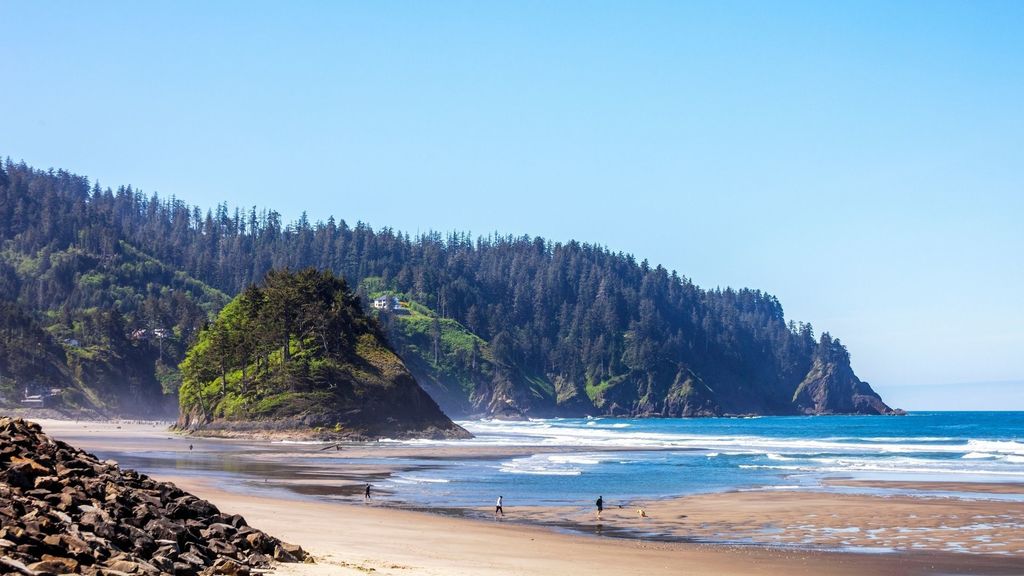
Neskowin is a charming coastal town with a welcoming neighborhood atmosphere and a breathtaking natural setting, located on a stretch of the Oregon Coast known for its tiny, intimate settlements and pristine beaches.
The little village of Neskowin is located at the mouth of Neskowin Creek, facing the south end of environmentally rich Nestucca Bay, sandwiched between Pacific City on the north and Lincoln City on the south. Nestucca Bay's unique combination of grasslands, dense forests, tidal marsh, mudflats, and bogs provides the ideal habitat for a large variety of birds, as well as a great place to go bird watching.
Since the 1930s, the Neskowin Beach Golf Course has been a favorite of generations of golfers. The lovely clubhouse on the nine-hole, 35-par course is where residents gather for coffee and conversation. The view from the seventh tee is really breathtaking! When you're done golfing, stop by The Café at Hawk Creek or The Bistro at Neskowin Trading Company in the village for some wonderful food. Gourmet goods, as well as a good assortment of wine, beer, and beverages, are available at The Trading Company.
Neskowin hosts special events such as Friday night movies, croquet contests, and other enjoyable activities during the summer. Horseback riding, a beach trek up Proposal Rock, and Fourth of July celebrations are all pleasant activities for visitors to enjoy with their families in a quaint, village setting. Launch your canoe or kayak into Nestucca Bay's beautiful bird estuary.
Best time to visit: The best time to see the stumps is during low tide in the winter (owing to the lowest tides of the year in January, February, and March).
Distance and driving time: 88 miles, 1 hour and 57 minutes drive from Portland
20. Manzanita, Oregon
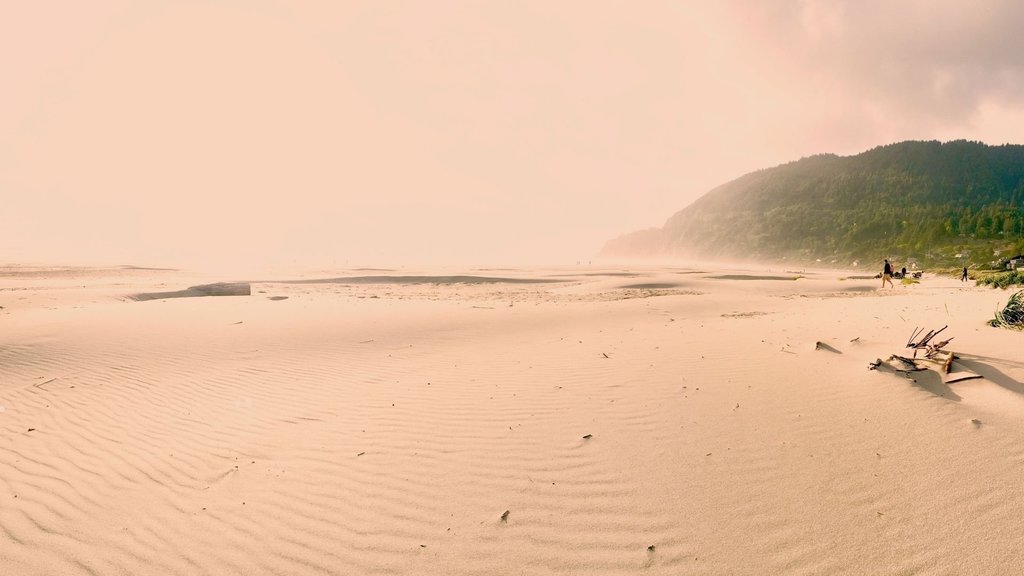
Manzanita is a hidden treasure in Oregon, which is almost a hundred miles distant from Portland. This coastal community has plenty to offer, including a gorgeous seven-mile beach and a small and very walkable downtown with eateries, a bar, a winery, shops, and a spa.
With plenty of soft sand and a nearby Neakahnie-Manzanita State Park, you’ll understand why Manzanita has the third most photographed scenery in all of Oregon.
If you’d rather do something other than playing on the sand, there is horseback riding and Bahama Mama’s rent boards, beach fare, and bikes.
One of the many reasons why you will love visiting this Pacific Northwest state is that Oregon beaches are public, which means everyone gets to enjoy nature’s beauty. Plus, many beaches are dog-friendly and Manzanita Beach is leash-free, allowing your four-legged family members to join in the beach day fun.
If you are a huge wine lover, then this is the place for you. Walk around town, you will be thrilled to discover the winery at Manzanita where the winery offers glass pours and wine tasting flights of their small-batch wines as well as beer, cider, and gourmet light fare.
Cannon Beach is just a 20-minute drive from Manzanita, so if you’re finding that you want a little more Oregon Coast action, hit the road and head to beautiful Cannon Beach!
Best time to visit: Manzanita, Oregon enjoys year-round pleasant weather that is never too hot or too cold. The wettest months are October through April, with the fewest amount of rainy days throughout the year. The months of June to October are the perfect time for a visit.
Distance and driving time: 93 miles, 1 hour and 44 minutes drive from Portland
New to our blog? Learn more about other popular day trips in the United States!



















